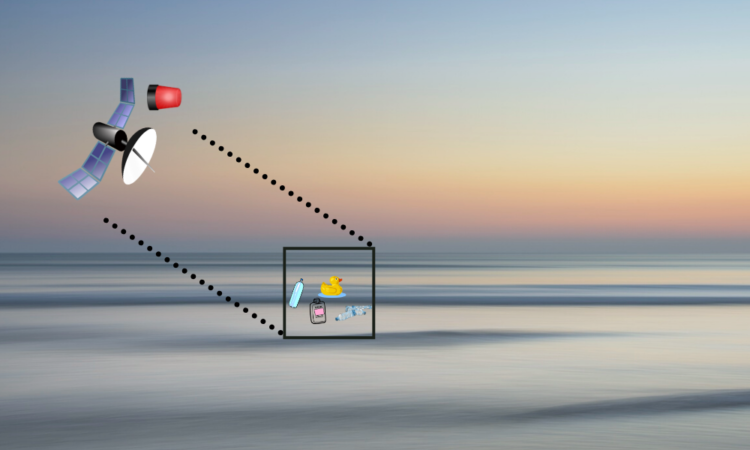Title: Finding Plastic Patches in Coastal Waters using Optical Satellite Data
Authors: Lauren Biermann, Daniel Clewley, Victor Martinez-Vicente & Konstantinos Topouzelis
Year: 2020
Journal: Scientific Reports
Millions of tonnes of plastic enter the oceans per year. It represents a threat to aquatic life – as ingestion and entanglement are a common cause of death among sea animals – and to our health – as it degrades over time and enters the food chain in the form of microplastic.
Cleaning the oceans from plastic is going to be a difficult task, due to the high quantity of both micro-and macro-plastic. Although there are some programs to do it (such as The Ocean Cleanup), finding it near coastal water may help to remove it before it is dispersed.
It is, then, necessary to find it at its source and to clean it from there.
The European Space Agency launched two satellites in 2015 and 2017, Sentinel-2A and 2B, to monitor the Earth. They register optical images of land and coastal water periodically, with the primary purpose of emergency management, agricultural, and coastal areas management. They equipped them with a device, the Multi-Spectral Instrument (MSI), that acquires images at different wavelengths, both in the IR and in the visible.
Millions of tonnes of plastic enter the oceans per year. It represents a threat to aquatic life – as ingestion and entanglement are common death causes among sea animals – and to our health – as it degrades over time and enters the food chain in the form of microplastic.
Cleaning the oceans from the plastic that we have thrown in is going to be a difficult task, due to the high quantity of both micro-and macro-plastic. Although there are some programs to do it (such as The Ocean Cleanup), finding it near coastal water may help to remove it before it is dispersed.
It is, then, necessary to find it at its source and to clean it from there.
The European Space Agency launched two satellites in 2015 and 2017, Sentinel-2A and 2B, to monitor the Earth. They register optical images of land and coastal water periodically, with the main purpose of emergency management, agricultural, and coastal areas management. They equipped them with a device, the Multi-Spectral Instrument (MSI), that acquires images at different wavelengths, both in the IR and in the visible.
Recently, researchers from Plymouth Marine Laboratory in the UK have developed a method (shown to be 86 % accurate) to use the MSI in the fight against Ocean plastic, by catching it in coastal water.
Based on the data from the ESA satellites, Biermann and co-workers identified the floating patches of macroplastics by analysing the water absorbance of infrared (IR) light. They based their study on the different behaviour of clean and contaminated seawater (with both microplastic and macroalgae) with near IR (NIR) radiation: clean water absorbs NIR while contaminated water reflects it.
When comparing the absorption features at the other wavelengths available to the MSI, they were able to distinguish plastic from other possible floating material, as you can see in the Figure below. They refined the method by studying coastal waters off Vietnam, Ghana, Canada, and Scotland.
Spectral signature of different materials. (Figure reproduced from Finding Plastic Patches in Coastal Waters using Optical Satellite Data, under the Creative Commons Attribution 4.0 International License.)
Thanks to these studies, an algorithm can now scan the satellite images and identify the zones of coastal water with a high concentration of macroplastic. At this point, removing it may not be as challenging as cleaning microplastic from the Oceans. The Ocean Cleanup, for example, is also implementing new solutions to pulling it out of the rivers with their Interceptor. A similar approach might be used to clean the identified plastic from coastal water.
Could-be-fun (if it weren’t so sad) fact: the choice of the sites was helped by monitoring social media hashtags related to plastic pollution.
The automatic identification of plastic in coastal waters will be a powerful ally in our fight against ocean pollution. It is necessary, however, that it stops entering the waters altogether. For this, we need to stop dumping it in nature and reduce and recycle it whenever possible.

